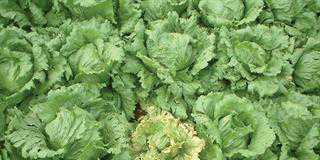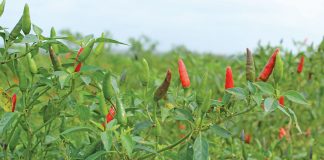You will soon notice that follow-up crops tend to have less vigour after a long cropping period of Swiss chard. I have sometimes wondered whether Swiss chard exhibits some allelopathic effect (whereby one species of plant inhibits the growth of another). Nutgrass and kweek are well-known for this, but I have as yet found no specific evidence of allelopathy in Swiss chard. It’s very close relative, beet, which is a crop of relatively short duration, does not have any allelopathic effect.
Perhaps follow-up crops suffer simply because the high production of Swiss chard depletes nutrients in the soil. Something else that growers need to be aware of is eelworm. Swiss chard is a host to both the cysteelworm and the root knot eelworm. Because the plant has a long productive period, there is ample opportunity for eelworm build-up through successive generations.
The presence of eelworm is another possible reason that crops do not all do as well as expected after Swiss chard. Consequently, it is important to know the eelworm status of the soil before planting. Examine the roots carefully before removing the crop. Lift plants from patches where there seems to be much less vigour.
The need for fertilisation
Swiss chard is a hungry crop. Apart from ensuring that the soil has a good organic content, you should keep the plants well fed with nitrogen to ensure they stay healthy and vigorous. When nitrogen is low, especially when this is combined with a lack of potassium, the plant is more vulnerable to leaf diseases. It is also necessary to maintain the crop’s high nutritional requirements, so as to increase yield and quality. If soil fertility wanes, the leaves will get smaller and lose colour.
As I have mentioned before, fertilisation should be based on a soil analysis. There should be enough macro-elements for a demanding crop. If you’re concerned about potassium level – if it seems ‘just sufficient’ – add more later on, together with nitrogen. Boron is probably the most important of the minor elements. Adding this should be standard practice. It’s convenient and safer to apply boron as two foliar feeds of Solubor at 1kg/ha per application. I’ve had good results from a soil
application of Borax at 20kg/ha, but it’s hard to apply this quantity accurately and the availability in the soil is difficult to quantify. At least you’ll know the foliar application will be used by the plant.
Urea, nutrient mixtures
Other minor and trace elements will cause a problem with Swiss chard only in exceptional circumstances, and soil pH is usually the cause. You can determine which elements are lacking by studying a good soil analysis, then conducting your own trials with various applications. A word of caution: avoid nutrient mixtures. They almost never contain enough of the deficient element. And if they do, and the plant does not have a deficiency of that element, they can do harm. Rather do your homework and find out exactly what the problem is.
Trace element deficiencies are often best corrected by a foliar feed when the plant is growing, but the specific element/s should be applied at the required rate. If you experience unexpected nitrogen losses or wish to improve the colour as harvesting approaches, apply a urea spray at 5kg/ha. Do this when there’s a fair amount of leaf on the crop or you’ll be wasting your time applying what is, after all, a foliar feed.













